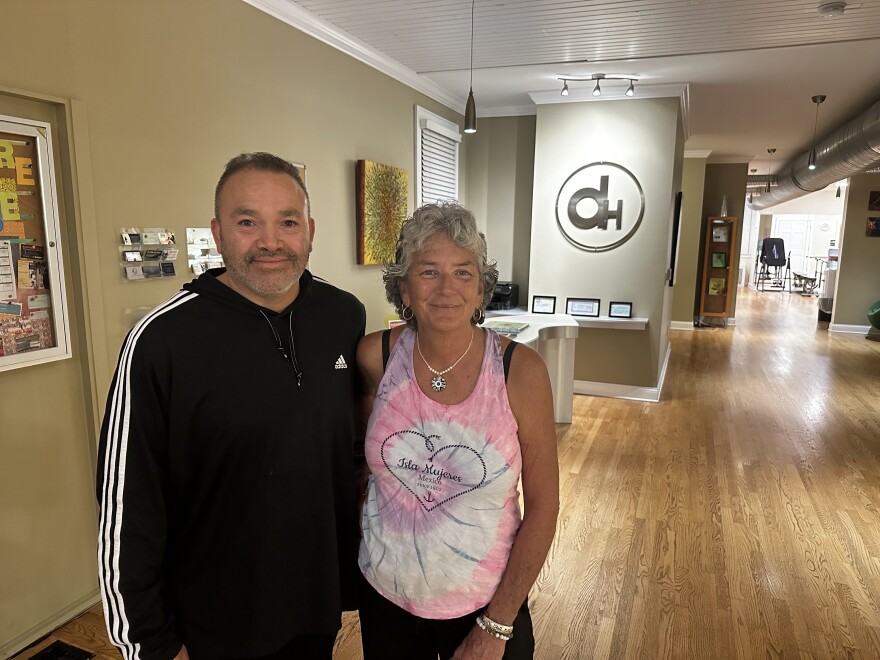It’s Thursday night and as the sun begins to set, people walk in, some holding their dancing shoes. The Delaware House offers more than dance classes, but it’s where Teesha Monroe has taken salsa lessons since January.
"I grew up mostly in Florida, so it’s kind of like it’s all around you," Monroe says of Latin music. "You just can’t help it. I’ve always listened to Spanish music, but it’s nice to actually know how to move to it. I didn’t really know even the basics. If you can do that you can do — I don’t want to say anything, but you can do a lot."

Another student, Genaro Castro, has practiced salsa dancing for the past four years.
"For me, it was an introduction," says Castro. "I’m Mexican, but I never knew how to dance. But I always wanted to dance salsa. So, as I got older I just took advantage of that and I love it. It’s just in you, you know, you feel so good. When you’re in a zone that’s how you feel and it just feels great."
For dance instructor Betsy Guerrero, dancing was a family activity growing up. Her father emigrated to the U.S. from Columbia where he would dance on the weekends for fun.
"We often invited people over to our houses," she says. "We had house parties that were poetry and music and dinners together and then sometimes we would have dances. Dancing in our home was something that I just did growing up. I knew from a young age that I was going to be a dancer."
Guerrero co-owns Mezclando Milwaukee Dance Company with her husband Matt Woida. Woida says Latin dance is a fusion of many cultures.
"That’s why we actually call our company Mezclando Milwaukee — it’s 'mixing Milwaukee,'" he says. "It’s a mixture of not only of cultures, but of people. There’s not too many places where you could interact with so many people who are so diverse in such an intimate and tangible, physical way. It’s a very unique kind of experience and people come to value that."
Guerrero and Woida also teach bachata, cumbia, merengue and more. The instructors say there’s a community feel in their classes.
"What’s really special is the music," Guerrero says. "Because of its very rich history and having African and European and Central American and South American instruments, every person can find a connection to that music. So it might be that African drum that you hear and that calls to you. It might be the European woodwinds or flute instruments that you and those speak to a different aesthetic."
Class is about to start. Guerrero and Woida position themselves at the front of the dance floor. There’s no music yet, just step-by-step instructions. Then the music starts. The class of about ten students practices spins, footwork and hand positions. They rotate partners throughout the hour-long lesson.
Some students pause to restart their movements to the beat. Others glance towards the front of the dance floor, either at their reflection in the mirror or to watch the instructors. When the class ends some people stick around to chat, like Genaro Castro.

"It’s a very nice community," says Castro. "It doesn’t seem like anybody is trying to outdo each other. It’s just a wonderful community and everybody is friends and you feel comfortable and you love what you’re doing. It’s dancing."
The Delaware House hosts salsa classes weekly on Tuesday and Thursday. The first Friday of each month is the Salsa Social where guests can eat food and take beginner and intermediate lessons.





